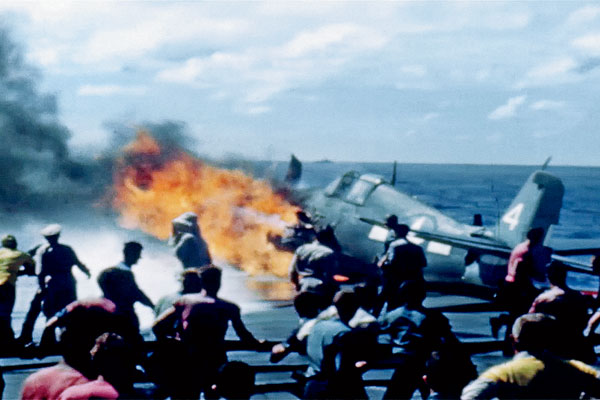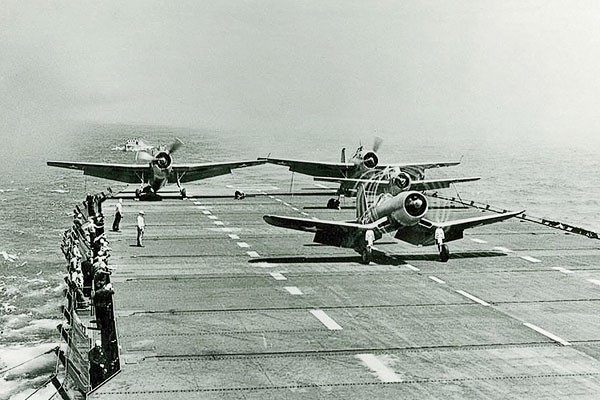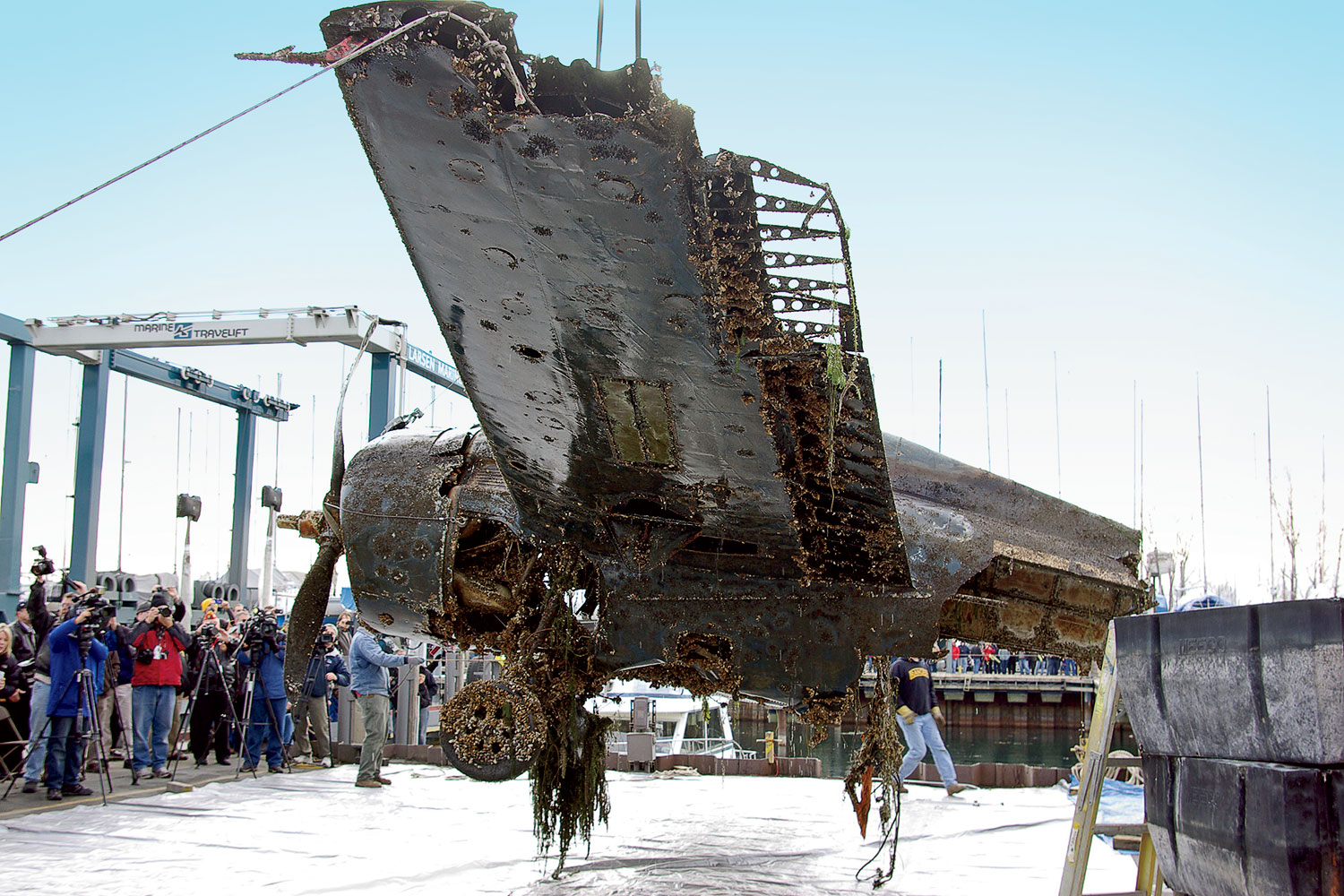Heroes on Deck, a documentary premiering May 26 on WTTW, reveals how thousands of pilots trained on makeshift "aircraft carriers" in Lake Michigan during World War II. Here's just some of what you'll learn.
1 Fear of German U-boats led to the location.
Lake Michigan might seem like an odd choice for teaching 15,000 pilots how to land on ocean-traversing aircraft carriers. But this way the flyboys and sailors wouldn’t risk attack from German or Japanese submarines. John Manley, a merchant mariner, came up with the idea. At first the navy was skeptical, but it decided to fast-track the proposal after Pearl Harbor. The program ran from 1942 to 1945.

2 Luxury liners served as aircraft carriers.
Two retired passenger ships—renamed Wolverine and Sable—were converted into mock carriers. (Neither had armor or weaponry.) It took almost $2 million and 1,200 workers to transform the opulent upper decks of the Wolverine into a 535-foot runway.
3 Which made landings really dangerous.
The converted runways were more than 250 feet shy of those on real carriers. Those short runways, combined with the lake winds, occasional waterspouts, and poor visibility due to smoke from the ships’ engines, made difficult landings even tougher. Roughly 150 planes crashed, and at least one pilot froze to death in the water.

4 More than 100 planes still lie at the bottom of the lake.
Using sonar and a remote-controlled submersible, army veterans and salvagers Allan Olson and Taras Lyssenko of A&T Recovery have found about 70 planes and retrieved 40. Their divers use large pillow-shaped airbags to lift the planes until they’re just beneath the surface before towing them to shore. One of the recovered planes shown in the documentary will eventually go on display at Navy Pier.



